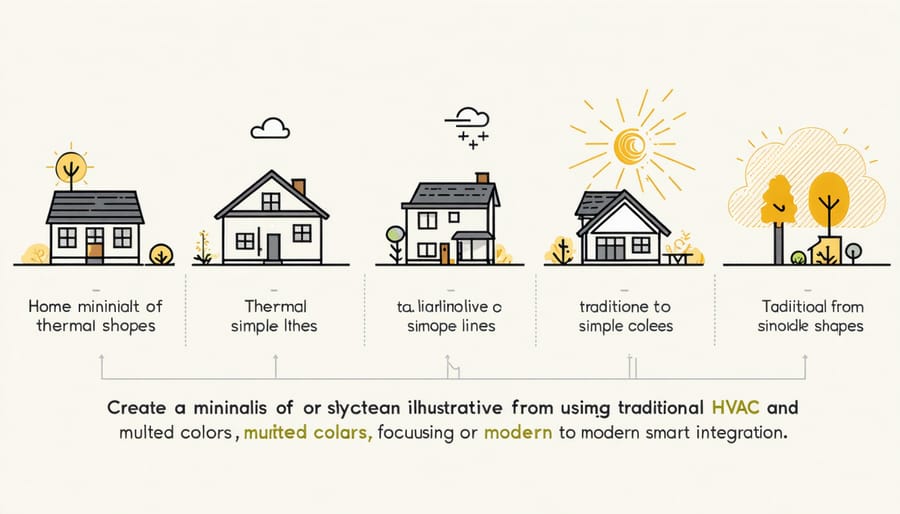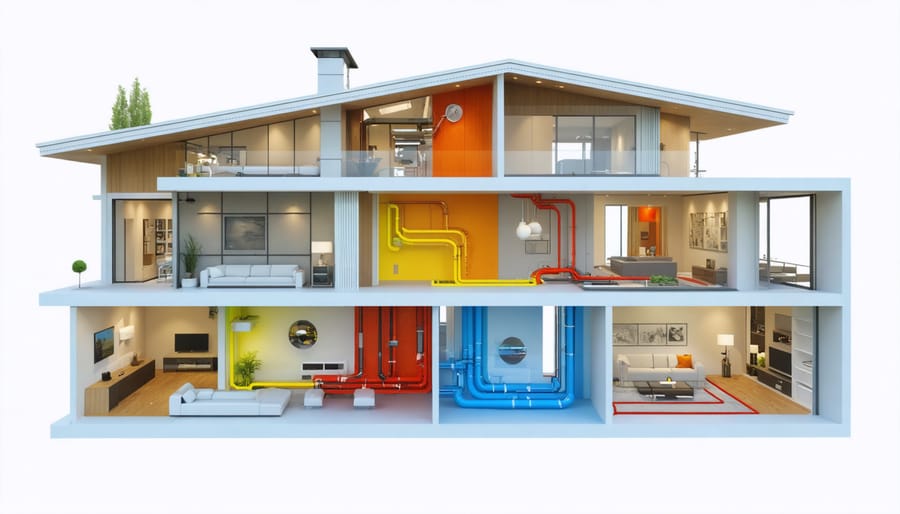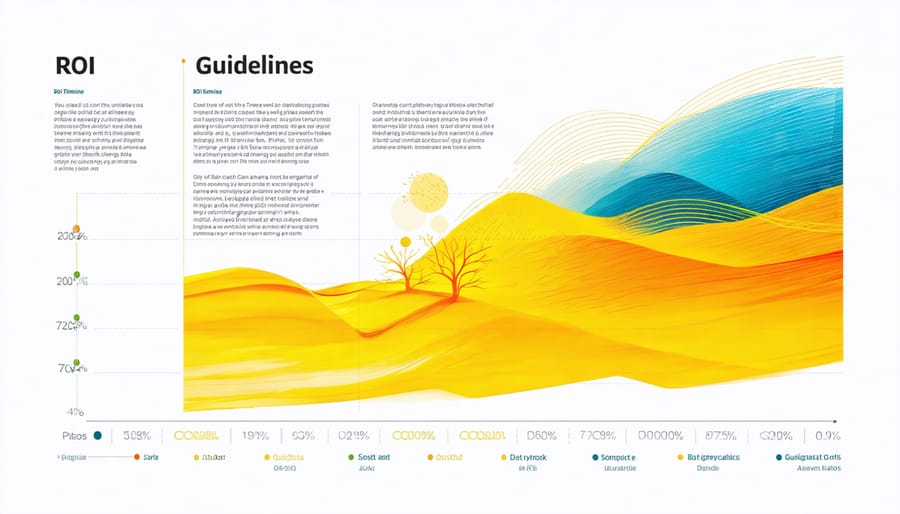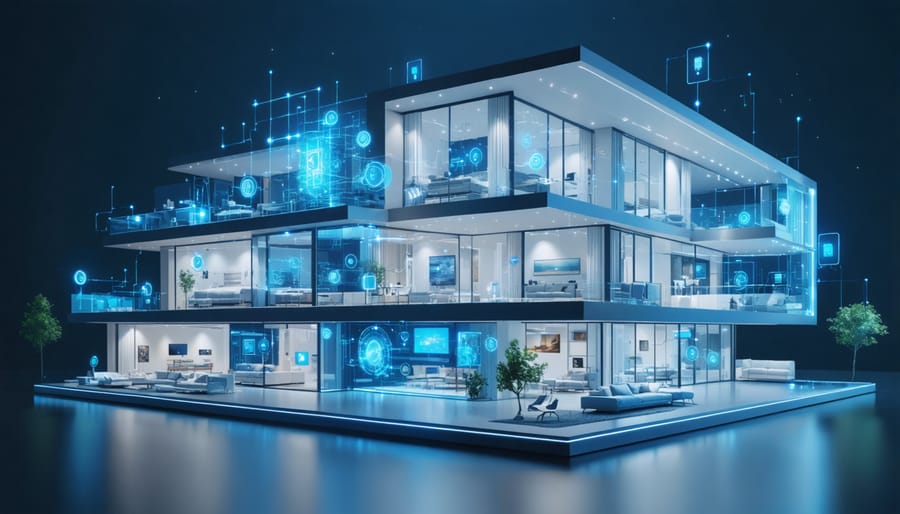Thermal energy applications represent a transformative force in modern construction, driving unprecedented advances in smart building energy management and sustainable architecture. By harnessing the fundamental principles of heat transfer and thermal storage, today’s construction professionals are revolutionizing how buildings interact with their environment and manage energy resources. From advanced heat pump systems that achieve coefficients of performance exceeding 4.0 to innovative phase-change materials that optimize thermal mass, these technologies are reshaping industry standards for energy efficiency and occupant comfort. The integration of thermal energy applications has demonstrated potential energy savings of 30-50% in commercial buildings while significantly reducing operational costs and carbon emissions. As construction industry leaders face mounting pressure to deliver high-performance, sustainable buildings, understanding and implementing these thermal solutions has become not just advantageous but essential for maintaining competitive edge in today’s market. This comprehensive exploration examines cutting-edge thermal technologies, their practical applications, and the measurable impacts they deliver across diverse building typologies.
The Evolution of Residential Thermal Energy Systems

From Traditional to Smart: The Technology Leap
The evolution of thermal energy management has undergone a remarkable transformation in recent years, driven by technological innovation and digitalization. Traditional heating and cooling systems are being rapidly superseded by advanced HVAC technologies that incorporate smart sensors, machine learning algorithms, and IoT connectivity.
Modern building management systems now utilize real-time data analytics to optimize thermal performance automatically. These systems can predict occupancy patterns, adjust temperature zones dynamically, and integrate with renewable energy sources for maximum efficiency. Smart thermostats and zoning controls have evolved beyond simple scheduling to incorporate weather forecasting and adaptive learning capabilities.
The integration of building information modeling (BIM) with thermal management systems has enabled unprecedented precision in design and operation. Engineers can now simulate and optimize thermal performance before construction begins, while operational data feeds back into the system for continuous improvement. This technological leap has resulted in energy savings of up to 30% compared to traditional systems, while significantly improving occupant comfort and system reliability.
Integration with Smart Home Ecosystems
Modern thermal energy systems are increasingly integrated with smart home ecosystems, enabling sophisticated control and optimization of building climate management. These systems communicate through standardized protocols like Z-Wave, Zigbee, or Matter, allowing seamless interaction with other smart home components and central management platforms.
Advanced thermal management systems can now respond to occupancy patterns, weather forecasts, and energy pricing signals through integration with smart home hubs. This connectivity enables automated adjustments to heating and cooling schedules, optimizing energy consumption while maintaining comfort levels. For instance, thermal systems can coordinate with smart windows and automated shade systems to maximize passive solar gains during winter months and minimize heat intake during summer.
The integration extends to voice-controlled assistants and mobile applications, providing users with detailed energy consumption analytics and remote control capabilities. Building managers can monitor performance metrics in real-time and receive predictive maintenance alerts through these connected platforms. This level of integration also facilitates demand response programs with utility providers, allowing buildings to automatically adjust thermal loads during peak demand periods, contributing to grid stability while reducing operational costs.
Key Thermal Energy Applications in Modern Homes
Smart Heat Recovery Systems
Heat recovery ventilation (HRV) systems represent a significant advancement in building energy efficiency, offering sophisticated solutions for thermal energy conservation. These systems capitalize on the temperature differential between incoming and outgoing air streams to minimize energy losses while maintaining optimal indoor air quality.
Modern HRV units achieve efficiency rates of up to 85-95%, substantially reducing heating and cooling costs in commercial and residential applications. The core component, a heat exchanger, facilitates thermal transfer between air streams without mixing the actual air volumes, ensuring fresh air delivery while preserving valuable thermal energy.
Smart integration capabilities enable these systems to respond dynamically to environmental conditions. Advanced sensors monitor temperature, humidity, and CO2 levels, automatically adjusting ventilation rates to optimize energy recovery and indoor comfort. This intelligent operation particularly benefits buildings in extreme climates, where traditional ventilation methods often result in significant energy waste.
Implementation costs are typically offset within 3-5 years through reduced energy consumption. Case studies from recent commercial installations demonstrate annual energy savings of 20-30% compared to conventional ventilation systems. Additionally, these systems contribute to building sustainability certifications, such as LEED and BREEAM, by reducing overall energy consumption and improving indoor environmental quality.
Maintenance requirements are relatively minimal, primarily involving regular filter changes and annual inspection of heat exchange cores, making these systems particularly attractive for long-term facility management strategies.

Thermal Energy Storage Solutions
Modern buildings require efficient thermal energy storage solutions to optimize energy consumption and maintain consistent indoor temperatures. These systems primarily utilize three key technologies: sensible heat storage, latent heat storage, and thermochemical storage.
Sensible heat storage, commonly implemented through water tanks or solid materials like concrete, offers straightforward integration with existing HVAC systems. These systems can store excess heat during peak production periods and release it when demand increases, effectively managing thermal loads throughout the day.
Phase Change Materials (PCMs) form the backbone of latent heat storage systems, providing higher storage density than traditional methods. When integrated into building materials or dedicated storage units, PCMs can absorb and release large amounts of energy while maintaining nearly constant temperatures, making them ideal for climate control applications.
Thermochemical storage, while more complex, offers the highest energy density and minimal thermal losses during storage. This technology utilizes reversible chemical reactions to store and release thermal energy, proving particularly valuable for long-term seasonal storage requirements.
Implementation success depends on careful system sizing, integration with existing building systems, and consideration of local climate conditions. Recent case studies demonstrate that properly designed storage systems can reduce HVAC energy consumption by 20-30% while improving overall building comfort levels.
Intelligent Temperature Zoning
Intelligent temperature zoning represents a significant advancement in building climate control, offering precise thermal management through strategically placed sensors and automated control systems. These systems divide buildings into distinct thermal zones, each independently regulated to optimize energy usage and occupant comfort.
Modern zoning systems utilize smart algorithms that analyze multiple data points, including occupancy patterns, external weather conditions, and thermal load requirements. By incorporating machine learning capabilities, these systems can predict and adjust to changing conditions, maintaining optimal temperature levels while minimizing energy consumption.
Implementation of intelligent zoning typically results in 20-30% energy savings compared to traditional HVAC systems. The technology enables dynamic load balancing, automatically redirecting thermal energy to areas requiring heating or cooling while reducing output in unused spaces.
Key components include:
– Smart thermostats with multi-zone capability
– Motorized dampers for airflow control
– Occupancy sensors and thermal mapping
– Building automation system (BAS) integration
– Real-time monitoring and adjustment capabilities
Industry case studies demonstrate particular effectiveness in commercial buildings with varying occupancy patterns. For example, a recent implementation in a 50,000-square-foot office complex achieved 25% reduction in energy costs through strategic zone management and predictive temperature control.
The system’s ability to maintain different temperature setpoints simultaneously across various zones makes it especially valuable for mixed-use buildings, where thermal requirements can vary significantly between spaces.
Cost-Benefit Analysis and ROI
Installation and Operating Costs
The implementation of thermal energy systems requires careful consideration of both initial capital investments and long-term operational expenses. Initial installation costs typically range from $8,000 to $45,000 for residential applications, varying significantly based on system size, complexity, and local market conditions. Commercial installations can range from $100,000 to several million dollars, depending on facility requirements.
Equipment costs constitute approximately 40-50% of the initial investment, including thermal storage units, heat exchangers, and control systems. Installation labor accounts for 25-30%, while design and engineering services typically represent 15-20% of upfront costs. Additional expenses include permits, site preparation, and system integration.
Operating costs primarily consist of energy consumption for pumps and auxiliary systems, routine maintenance, and periodic component replacement. Annual maintenance costs average 2-3% of the initial system cost, while energy operating expenses typically range from $0.05 to $0.15 per kWh of thermal energy delivered, depending on local utility rates and system efficiency.
Return on investment (ROI) periods typically range from 5-10 years for well-designed systems, with some installations achieving payback in as little as 3 years through energy savings and available incentives. Factors affecting ROI include climate conditions, energy prices, system utilization rates, and maintenance practices. Regular monitoring and optimization can significantly reduce long-term operating costs while extending system lifespan.
Energy Savings and Payback Period
The financial benefits of implementing thermal energy applications are substantial, with most systems demonstrating significant energy cost reduction strategies that yield impressive returns. Analysis of recent commercial installations shows that thermal energy systems typically achieve payback periods ranging from 3 to 7 years, depending on facility size, energy consumption patterns, and local utility rates.
For large commercial buildings, thermal energy storage systems can reduce peak cooling costs by 30-40%, with annual energy savings of $0.20-0.40 per square foot. These savings are particularly notable in regions with high demand charges or time-of-use pricing structures. Case studies from recent implementations demonstrate that facilities exceeding 100,000 square feet can realize annual savings of $50,000 or more.
The ROI calculation must consider initial capital costs, which typically range from $15-30 per square foot of conditioned space, against projected energy savings and operational benefits. Factors affecting payback include:
– Utility rate structures and incentives
– Building occupancy patterns
– Climate zone considerations
– System maintenance requirements
– Energy price volatility
When properly sized and implemented, thermal energy systems often achieve positive cash flow within the first year of operation, with cumulative savings exceeding installation costs well before the end of the system’s 20-25 year operational life.

Future Trends and Innovations
The landscape of residential thermal energy is rapidly evolving, with several groundbreaking technologies poised to transform how we approach heating and cooling in buildings. Advanced phase-change materials (PCMs) are emerging as a revolutionary solution, offering enhanced thermal storage capabilities while requiring minimal space. These materials can maintain consistent indoor temperatures by absorbing and releasing heat at specific temperature thresholds, significantly reducing HVAC energy consumption.
Artificial Intelligence and machine learning algorithms are increasingly being integrated into thermal management systems, enabling predictive temperature control based on occupancy patterns, weather forecasts, and real-time energy prices. These smart systems can optimize energy distribution throughout buildings while maintaining optimal comfort levels for occupants.
Building-integrated photovoltaic thermal (BIPVT) systems represent another promising development, combining solar electricity generation with thermal energy collection. These systems can simultaneously produce electricity and heat water, maximizing the utility of available roof space and improving overall building energy efficiency.
Researchers are also making significant progress in developing transparent thermal insulation materials that can maintain excellent insulating properties while allowing natural light transmission. These materials could revolutionize window design and building envelope performance, particularly in commercial and high-rise residential buildings.
Geothermal heat pump technology is advancing with the introduction of CO2-based systems and improved drilling techniques, making installation more feasible in urban environments. These innovations are making ground-source heating and cooling more accessible and cost-effective for residential applications.
Looking ahead, the integration of thermal energy storage with smart grid systems will become increasingly important. This connection will enable buildings to participate in demand response programs, storing thermal energy during off-peak hours and reducing grid strain during peak demand periods.
Emerging nanomaterials and advanced composites are also showing promise in thermal management applications, offering superior insulation properties and the potential for self-regulating thermal characteristics. These materials could lead to more efficient and responsive building envelopes in the coming years.
As we’ve explored throughout this comprehensive analysis, thermal energy applications represent a crucial frontier in modern construction and building management. The integration of these technologies offers substantial benefits, from significant energy cost reductions to enhanced occupant comfort and improved environmental performance.
Key implementation strategies should focus on thorough initial assessments, careful system selection, and proper integration with existing building infrastructure. Construction professionals must consider local climate conditions, building usage patterns, and regulatory requirements when designing thermal energy solutions. The success stories and case studies presented demonstrate that ROI can be achieved within 3-5 years when systems are properly designed and maintained.
Moving forward, industry professionals should prioritize:
– Conducting detailed energy audits before system implementation
– Investing in smart monitoring and control systems
– Training facility managers in optimal system operation
– Regular maintenance and performance optimization
– Integration with other building management systems
The future of thermal energy applications lies in their seamless integration with smart building technologies and renewable energy sources. As technology continues to evolve, staying informed about emerging solutions and best practices will be crucial for construction professionals. By embracing these innovations and following established implementation guidelines, organizations can maximize the benefits of thermal energy systems while contributing to sustainable construction practices.
Remember that successful implementation requires a holistic approach, considering both technical requirements and operational realities. The investment in thermal energy solutions today will yield significant returns in efficiency, sustainability, and building performance for years to come.

